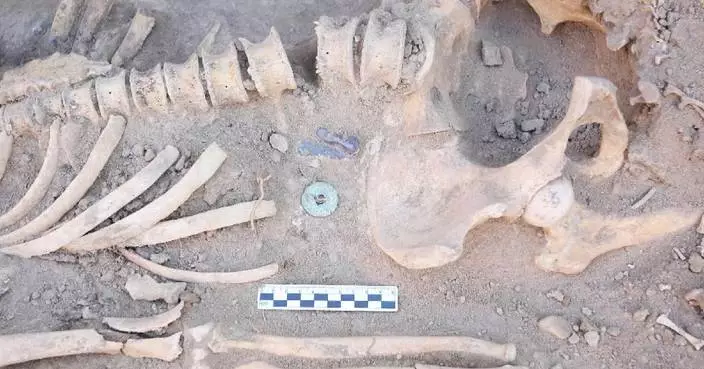The National Library of China in Beijing has unveiled a new exhibition featuring a diverse collection of ancient Chinese texts and literary cultural artifacts, offering a rare glimpse into the nation's enduring cultural and intellectual heritage.
Among the focal points are significant historical documents including oracle bones, bamboo slips used for writing, and stone inscriptions, with each of these items carrying a unique piece of history.
In early Chinese history, rulers are known to have used divination techniques that involved placing animal bones, or oracle bones, over fire and interpreting the cracks that formed. This practice is believed to have inspired some of the earliest Chinese writing systems.
"The divination on the oracle bones contains a record indicating that the king of the Shang Dynasty (1600-1046 BC) asked if there would been any incoming disasters, and concluded with a Gongdian (a ritual in the Shang Dynasty) held on Jiazi (the first day in a cycle in the Chinese calendar of stems and branches) in April," said Dong Xin, an instructor from the Exhibition Department of the National Library.
The exhibition also highlights a seminal work of literature in the history of Chinese mathematics, which would later serve as the foundation for an accurate calculation of pi by Chinese mathematician Liu Hui in the third century BCE.
"The Nine Chapters on the Mathematical Art is regarded as the foremost work in Chinese mathematical literature, containing nearly 100 formulas and establishing a foundational framework for ancient Chinese mathematics. It also served as a textbook at the Imperial Academy of Mathematics during the Tang Dynasty (618-907). The version displayed is the earliest known edition, and it is a printed edition from the Southern Song period (1127-1279)," Dong explained.
Gu Heng, director of the Exhibition Department, said that their efforts to digitally replicate the ancient books on display have paid off in helping visitors better digest their contents.
"In the past, visitors often concentrated on the physical attributes of ancient books, such as their appearance and displayed pages, but struggled to grasp the depth of the main content within the brief time allotted for a typical visit," he said.
"This exhibition has a significant difference from previous ones: it incorporates six new databases that digitize the entire content of the ancient books. By combining the physical displays in the exhibition with the extensive back-end databases of the National Library, it creates an integrated system that allows visitors to deeply engage with and understand all the related knowledge and traditional Chinese culture," Gu added.
The National Library of China has released over 7,085 new digital resources. Its Chinese Ancient Books Resource Database has now featured over 139,000 digital items, with more than 105,000 from the library's own collection.
Under the theme of inheritance, the exhibition at the National Library was co-organized by several regional institutions like the Liaoning Provincial Library, Shanghai Library, and Shandong Museum.

China's National Library holds wide-ranging exhibition of ancient Chinese texts









